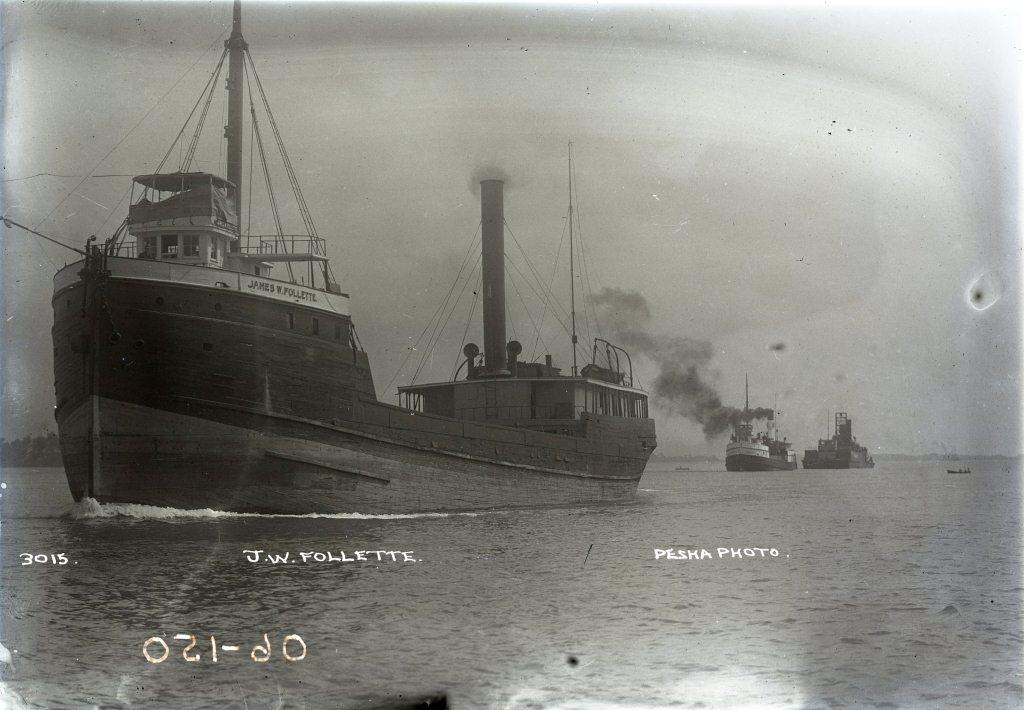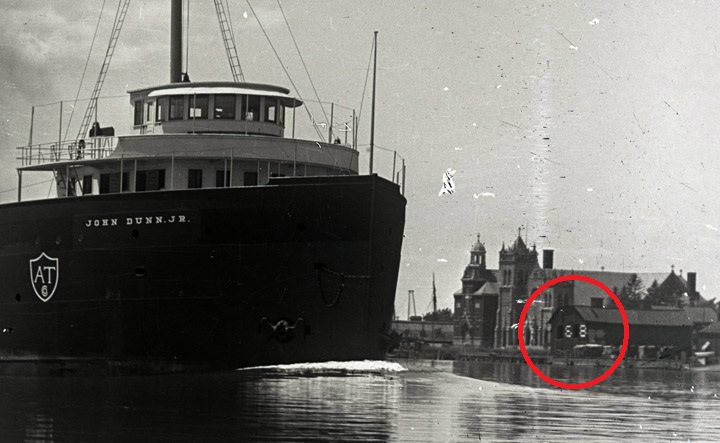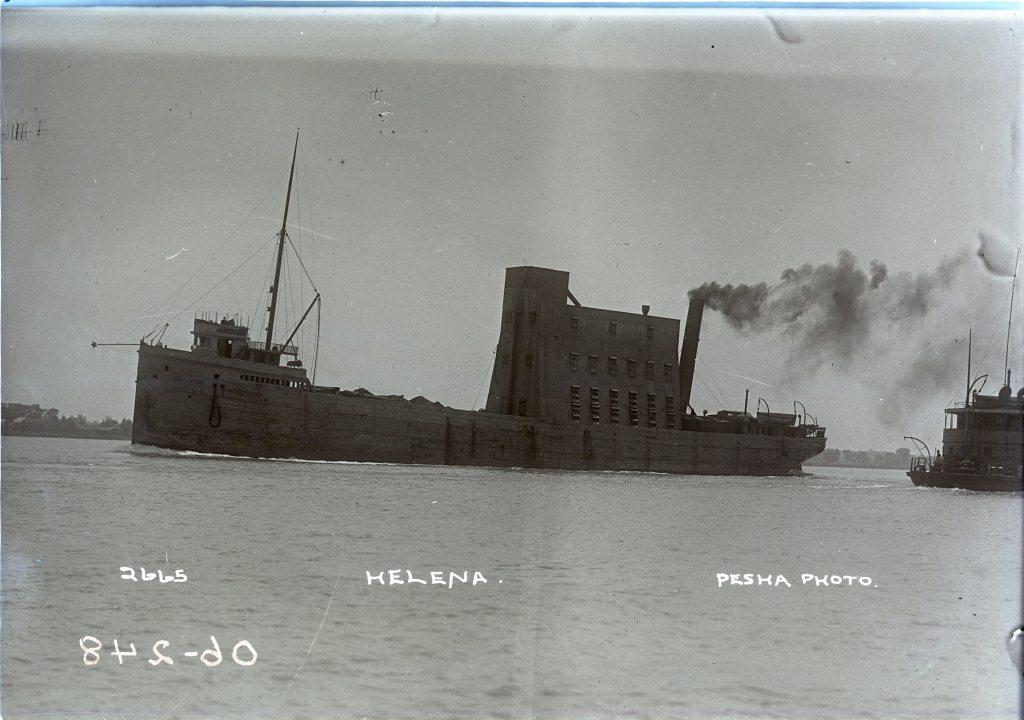Louis James Pesha
The archives of the Detroit Historical Museum and the Dossin Great Lakes Museum are home to a very unique collection—the glass plate negatives from the studio of Louis James Pesha. Pesha was a prolific photographer who specialized in photographing ships as they passed his studio in Marine City along the St. Clair River. Following Pesha’s untimely death in an early automobile accident in 1912, his wife Lena continued to run the studio, eventually moving it to Detroit. As many of the negatives we have from Pesha’s studio bear images taken well after 1912, someone at the studio continued Pesha fascination with documenting traffic on the waterways.

Pesha and his successor(s) were working during a particularly exciting time on the Great Lakes. The metal-hulled freighters were still fairly new and they shared the waterways with many wooden-hulled vessels. Often crew members could be spotted resting along the railing or triumphantly perched atop a deck load of lumber. Traffic was frequent, as evidenced by this image of JAMES W. FOLLETTE followed by another freighter towing a barge, as two rowboats look on. There were also many rather unusual varieties of vessels captured on these plates, from the experimental whalebacks, to dredgers equipped with massive hoses, to—my favorite—the Helena, a floating grain elevator. However one of the most surprising things captured in this collection, was not a vessel, but a rather anachronistic-seeming seven segment display presumably used to alert mariners passing Marine City to the temperature, decades before people rose in the mornings to the horrible sounds of LCD alarm clocks.

As glass-plate negatives are particularly prone to shattering or their emulsion flaking off, we are excited to be able to help further preserve and share Pesha’s work. Please visit our online collection to see more of these photos as well as thousands of other objects.


